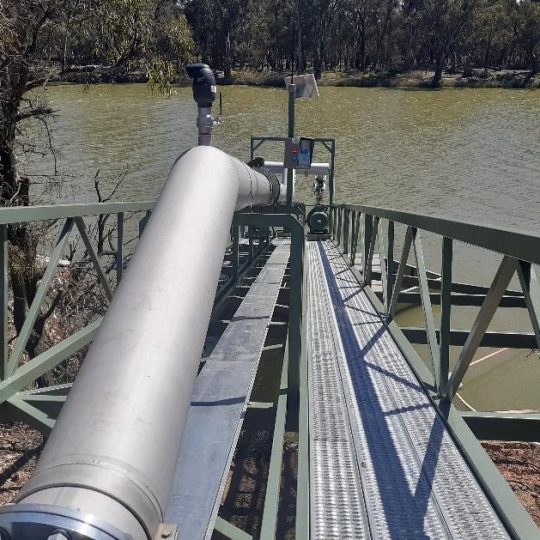Canterbury T-L Pivot Irrigation

Greg Lovett, with wife Joanne and son Daniel, farm 861 hectares of peas, squash, pumpkins, sweet corn, broccoli, potatoes, onions, wheat, barley, ryegrass and black currants.
Twelve years ago, Greg installed the first of twelve T-L linear irrigation systems.
“I first talked with an experienced independent irrigation system serviceman who works with all brands and had no particular affiliation,” Greg recalls. “I asked which system he would buy.
“He told me that if there was a problem with a T-L he could have it fixed within an hour. On the other hand, an electrical machine might take him up to 24 hours to locate the fault and solve the problem.
“Since my ability to fix anything electrical was never all that great, this was a selling point for T-L as far as I was concerned,” Greg said.
“Things never break down when you don’t need them. In reality, they always seem to break down when you really do need them,” Lovett continues. “So, we think to reduce downtime we need equipment that’s reliable from the start.
“It’s just not about looks. T-L’s are a solid piece of equipment. They’re durable and ours don’t show any signs of rust or breaking down after a considerable amount of use,” he says.
The only failure Lovett has experienced with a T-L over the past 12 years is the replacement of a single gearbox, and, he points out, that to be fair it was under extreme load. The system was still under warranty, and except for general maintenance, that’s the extent of his T-L repair history.
He also comments that T-L’s company support has been tremendous whenever he’s had a question, even though they’re 12,000 miles away.
A T-L feature that Lovett finds most appealing is their continuous movement, especially on his intensely farmed acres.
As he notes, “We find that low pressure nozzle applications are uniform — and since water is getting more expensive every year it allows us to spread our allocation over a larger area. We benefit in greater yields, lower costs in producing a crop and more money.
Although Lovett anticipates a T-L will pay off in ten to 15 years he admits that it could happen much quicker than that. “Because,” as he says, “in some years without irrigation we wouldn’t get any crops at all. Dry land farming in our area isn’t possible any longer.”
Quite often other farmers considering a switch in pivot systems drop by to ask Lovett what he really thinks about his T-L linear systems.
“I can only tell them how our T-L’s stack up for us today: Simple, durable, reliable.”
Precision Linear Control
Of his ten T-L linear systems, Lovett’s three most recent purchases were with Precision Linear Controls. The application rate determines the speed of the Precision Linear Control, which features three forward and three reverse speeds.
“A PLC is quite flexible in its ability to move from one crop to another either day or night without anyone being there,” he explains.
“For instance, in a 400-meter run we may have three or four different seedlings in that one run. The PLC will change speed depending on which crop is being watered. With broccoli, as an example, we might have some that’s just been transplanted and some that’s almost ready to harvest. So, different amounts of water are needed; typically onehalf inch to one inch is applied.”
Lovett says that while they can do this with their other systems also, someone has to go out to the field at every change. But, with T-L’s PLC they can program all this into the machine and it will automatically adjust speeds and application rates, saving time and labour.
To discuss your irrigation projects please give us a call on 1800 571 812.
Latest Projects

Early adopter of citrus growing automation achieves cost-efficiency, connectivity, and conservation in the one package
An Australian citrus grower at the forefront of automation efficiencies sweeping through the industry is increasing production quality and output…
Read More...
Premium table grape producer Palm Vineyards equips itself for a sustainable future with 3-into-1 irrigation upgrade
An international exporter of Australian table grapes noted for the quality of its fruit and sustainability of its horticultural practices,…
Read More...